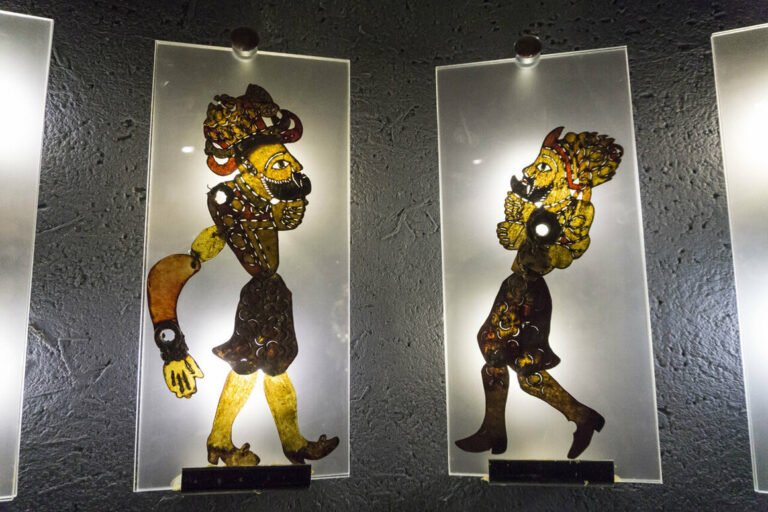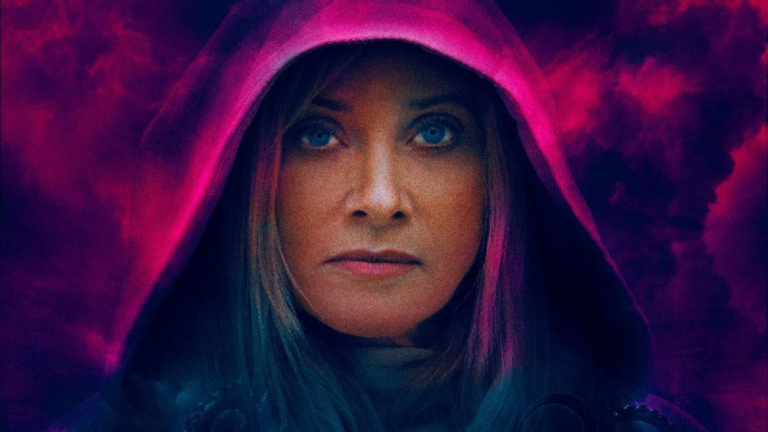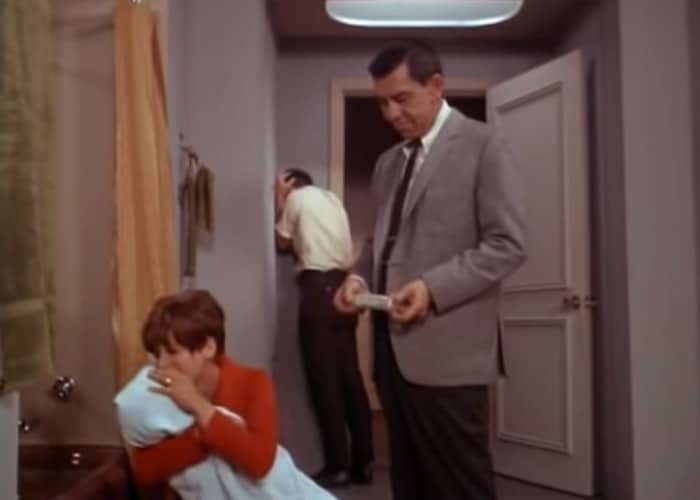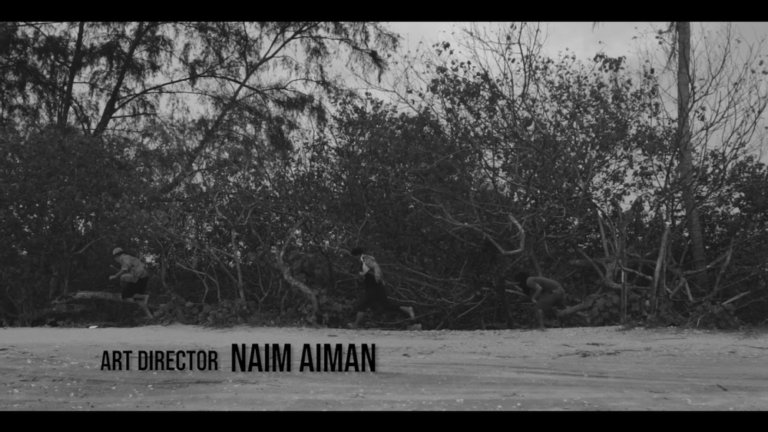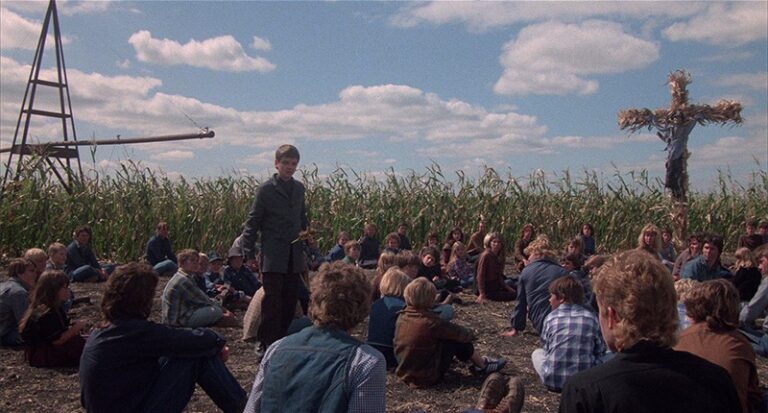SXSW 2021: Interview With THE SPINE OF NIGHT Writer/Director Philip Gelatt And Morgan Galen King
I appreciate a film like The Spine of Night for throwing out storytelling conventions one would expect out of the fantasy genre. At times, it has more similarities with the works of H.P. Lovecraft than that of J.R.R. Tolkien. Meanwhile, the film keeps you constantly aware that it was painstakingly animated via rotoscope animation.
The following is the interview I had with writers/directors Philip Gelatt and Morgan Galen King. We talked about the inspirations behind the story, genre conventions, and what the filmmaking and animation process was like behind-the-scenes.
Kevin L. Lee for Film Inquiry: Hi Philip, Morgan! Thank you so much for your time, and congratulations on The Spine of Night. I quite enjoyed this film; it was quite an experience!
Morgan Galen King: Thank you very much, I’m glad!
I like to start with, I guess, the most obvious thing about it, which is the rotoscope animation. Can you walk me through what that decision-making process was like?
Morgan Galen King: Yeah! From the very moment I started working on animation, the thing that was the most influential to me was the late 70s early 80s era of Ralph Bakshi’s classics like Heavy Metal, also a little bit of He-Man and Thundarr. I grew up with a lot of that stuff, I was just right in the pocket of five years, where that was all really big. So yeah, it was an aesthetic that I always wanted to pursue. A lot of the short films I worked on prior to this was like refining that workflow and figuring out how to do it on a feature scale. Ultimately, Phil saw the Exordium (2013) short, and we got together, and he got us a warehouse and we made this huge fantasy epic in this little room and then drew it for seven years.
It sounds like the works you mentioned that influenced you that, from the start, you really wanted to tell this fantasy story about knowledge and power and this really interesting cosmic object that the characters call The Bloom. What would you say was your favorite part about writing this story?
Morgan Galen King: I mean, it was a deeply collaborative effort between the two of us to do it. In a way, the most fun part was just being able to synthesize ideas together and really explore the setting. Phonetically, I guess it was a lot of philosophical questions. I’ve considered sociological questions about how power and knowledge is distributed in a society.
Philip Gelatt: I love fantasy as a genre and science fiction as a genre and horror as a genre and at the time, and I guess to date, it was the only time I ever got to write full-on fantasy. Being able to do that genre and play with that genre and do that genre in a particular way was certainly the most fun part of writing it. It’s just fun to sit around and think about fantasy worlds and barbarians and weird librarians and necromancers, I mean that’s, I love that stuff. It’s a blast!
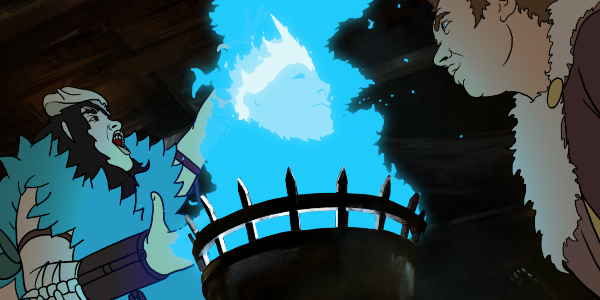
I really appreciate how you mention fantasy but then horror as well because even though The Spine of Night will be classified as a fantasy, there is quite a bit of Lovecraftian cosmic horror in all this. Really, it’s not like most fantasy stories out there. I could feel that sense of freedom. This is not something that a big studio would normally do.
Philip Gelatt: Not even normally. I feel relatively safe to say it’s not something a big studio would ever make. Certainly not now. To the question of horror and the DNA of the movie, Morgan and I are both big horror fans and I think that horror and fantasy, at least in my mind, share more of the DNA than they are often thought to have. I think to a lot of people, fantasy is like Tolkien and elves and dwarves and horror is like slasher films. They feel incredibly disparate, but I think when you peel that away a little bit more and look at other versions of those particular genres, you start to see a potential commonality that we wanted to explore in the film to a certain degree.
Sure!
Philip Gelatt: Although I agree, most people are going to call it a fantasy film and not a horror film.
Well, one of the things I really loved about your film is it’s constantly aware of this line between fantasy and surrealism. You cross that line just a bit and things start to really feel off visually and tonally. Usually, fantasy stories, the worlds at least, there are places that audiences would want to go to or are interesting enough for us to almost be nostalgic for it.
Philip Gelatt: Right.
Morgan Galen King: Yup.
But you cross that line just a bit and it becomes like a nightmare, feels like a dream.
Philip Gelatt: You’re saying you want to visit Middle-Earth, but you don’t want to visit the world of our movie. [laughs] That’s fair!
Morgan Galen King: [laughs]
[laughs]
Morgan: I think too that so much of fantasy is like an ordered world, where there is a map and there is a hierarchy and a legacy of empires. You look at something like Game of Thrones, you can imagine yourself there because there are rules and it’s understandable. It was very fun to explore something where the maps are less defined than the norm. It’s a little more of a surreal and chaotic setting, for sure.
So even though the entire film is animated, you have some really interesting architecture designs in this and costume designs in this. What was the creative process like behind all that?
Morgan Galen King: A lot of the costumes, I did. I have a background in design, so I did my best to make them interesting. Since the film jumps through time, I hope you could see the evolution of the costuming and architectural styles. There was definitely thought in seeing these things evolve over the course of the film. But also, we worked with some truly brilliant painters. I would give them very rudimentary sketches of what I thought the room kind of looked like, and they would return with these digital paintings that were, I mean, the best you could imagine. Some of them were just outrageously good. Because they were imaginary spaces, the painters really had a lot of flexibility to make some truly imaginative locations.
Was that done alongside the writing process, or was the script first completed, and then the design part starts?
Morgan Galen King: We definitely started with the script. We wrote it in early 2014. The costume designs were there but the locations… I mean when we were on set, filming the motion references, I felt like half of my job was like, “No, you’re looking over there. That’s where the castle that we’re talking about is. There’s the swamp, that’s the castle,” since we were shooting in an empty warehouse. So, it was a lot of fun getting the layout of the land. But the actual design work was later.
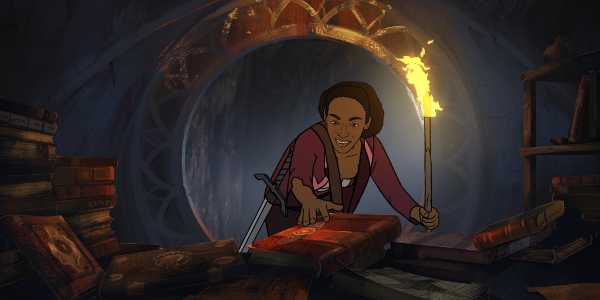
Watching the film, because it’s rotoscope animation, it was also like a fun game for me to imagine, “What was it like when you actually shot this?” I’d also like to say the sound design is really quite exquisite in this. I think that’s part of why I constantly thought about what it was like when you shot this. I started wondering, “Were the actors wearing any interesting costumes, holding props?” because it sounds like you actually had a set and all that, even though you said it’s a warehouse.
Philip Gelatt: Yeah, the raw footage looks… to be very specific, it looks like people wearing weird all-white costumes with black lines drawn on them, holding wooden dowels and cardboard cutouts in a not-very-well-lit warehouse, shot with a Canon 7D.
[laughs]
Philip Gelatt: [laughs] Yeah, to be highly specific, it looks pretty unimpressive. Kinda funny, but unimpressive. So, for the sound design question, we tried to record sync sound on set. The actors also had lavs and we had a boom mic. But once we got into the sound design process, our sound designers, to their credit, really quickly were like, “Your production sound all has to go, because it is terrible.” So, we ditched all the production sound and re-recorded. So, every voice you hear, even some people like Betty Gabriel, who was on set with us, she re-recorded all her lines too. Everything in the movie is re-recorded.
So, just to be sure. The live-action footage, you still have that.
Philip Gelatt: Oh yeah, we still have it. But to be double clear, Lucy Lawless is not in our live-action footage. There’s a different motion reference for those roles. But yeah, we certainly still have that live footage.
So, you’re telling me somewhere in a hard drive, you have Patton Oswalt and Richard E. Grant wearing an all-white –
Philip Gelatt: [laughs] No no, they’re not in it either! None of the big voice people were in the motion reference footage. They were all just voices!
Morgan Galen King: [laughs]
[laughs]
Philip Gelatt: There is a live-action version of the movie, but it’s not with any of the stars.
Well, I would love to one day see some of that live-action footage to accompany the film on a Blu-ray or something.
Philip Gelatt: We are hoping to put out some of it at some point because it makes a pretty stark comparison from where we started to where we ended up.
Yeah! It’d be great to watch the actual finished product with your live-action footage next to each other. So, last question. What feedback would you give to other aspiring filmmakers out there who want to tackle their project with rotoscope animation?
Philip Gelatt: [laughs]
Morgan Galen King: Well, I mean… if you’re gonna do it like this, you should really prepare to spend a long time on it. It’s a slow, slow process. But there’s also a lot of emerging technology that I think is getting closer to capturing the aesthetic. I think you kind of have to do it by hand to really get the look that I wanted, but technology is getting better all the time. Just make sure you schedule a lot of time in your own life to do it because, again, this took almost seven years to draw. You gotta be prepared for that.
Philip Gelatt: For people who want to do a rotoscope movie, I think Morgan hit the main thing. It is a long and arduous process. But I also think for people who want to make ambitious fantasy projects, my only piece of advice would be to please figure out how to do it because I love crazy fantasy projects. Go out and make them, whether by rotoscope or whatever way you figure out how to make them, I will watch them and love them. That’s my advice!
Well, I would like both of you to know that your arduous hard work has really paid off. One of the things I love about The Spine of Night is every single second as I’m watching it, I’m constantly aware that people drew it and that people handmade it. I’m always aware of the hard work that was put into it, and again, it’s unlike any other animated or fantasy movie I’ve seen recently. I’m really excited for you guys. I hope this finds a large audience!
Philip Gelatt: Thank you so much.
Morgan Galen King: Thank you very much.
And thank you so much for your time, I really appreciate it!
Film Inquiry thanks Philip Gelatt and Morgan Galen King for taking the time to speak with us!
The Spine of Night premiered on March 18th at SXSW 2021.
Does content like this matter to you?
Become a Member and support film journalism. Unlock access to all of Film Inquiry`s great articles. Join a community of like-minded readers who are passionate about cinema – get access to our private members Network, give back to independent filmmakers, and more.
Join now!
